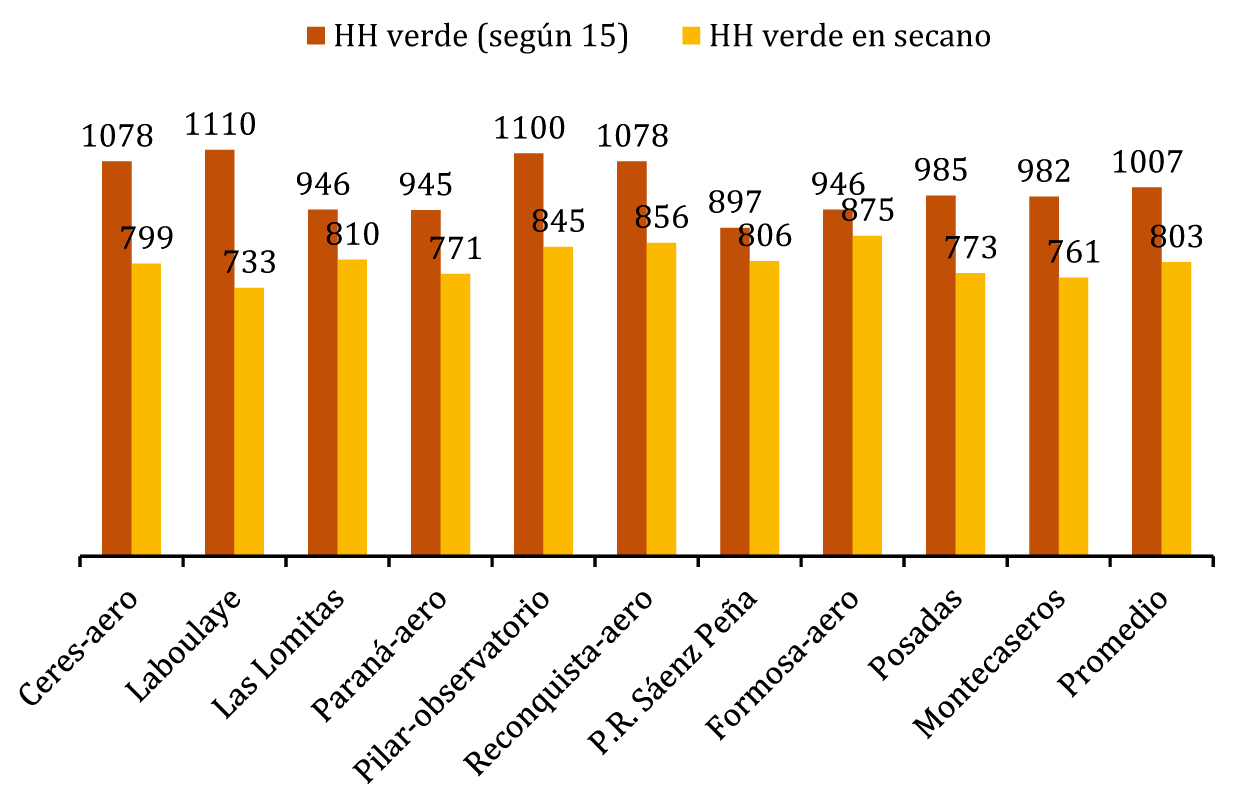Huellas hídricas verde y azul del cultivo de maíz (Zea mayz) en provincias del centro y noreste argentino
Palabras clave:
huella hídrica, maíz, AquaCrop, evapotranspiración, riego, secanoResumen
La huella hídrica (HH) de un cultivo indica la cantidad de agua evapotranspirada para obtener una determinada producción, distinguiendo entre el agua procedente de las precipitaciones (verde) y el agua extraída de ríos, lagos y acuíferos, aplicada mediante riego (azul). Son objetivos del trabajo estimar las HH verde y azul del maíz en provincias del centro y del noreste argentino bajo tres condiciones (secano, riego y riego y fertilidad edáfica óptimos) y analizar el impacto de estas prácticas. Se siguió la metodología internacionalmente aceptada utilizando el modelo AquaCrop. Los resultados mostraron: que el riego y la fertilización reducen la HH debido al aumento del rendimiento; que la huella hídrica verde representa el 92% de la sumatoria (verde más azul) y que la huella hídrica calculada en secano alcanza un valor medio de 803 L.kg-1 (bajo riego este valor es de 602 L.kg-1 y con riego y fertilidad edáfica óptimos, de 488 L.kg-1). Esta información permite al productor valorar convenientemente las prácticas de riego y el uso eficiente de fertilizantes y concientiza a los administradores del recurso hídrico sobre la necesidad de diseñar políticas adecuadas para el uso sostenible del agua.
Descargas

Descargas
Publicado
Cómo citar
Número
Sección
Licencia
Aquellos autores/as que tengan publicaciones con esta revista, aceptan las Políticas Editoriales.










.jpg)




